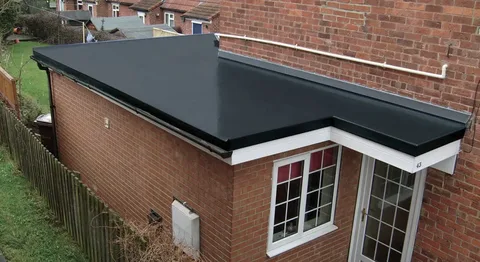
When it comes to selecting the right roofing system for your home or commercial building, flat roofing stands out as a reliable and cost-effective option. Homeowners and business owners in Purvis, MS, often face varying weather conditions, making it essential to invest in a roofing solution that is durable, efficient, and long-lasting. Whether you’re installing a new roof or replacing an existing one, understanding the benefits of flat roofing can help you make an informed decision.
Why Choose Flat Roofing?
Flat roofing offers several advantages that make it a preferred choice for residential and commercial properties alike. Below are some key benefits:
1. Cost-Effective Solution
One of the primary reasons people opt for flat roofing is its affordability. The materials and labor required for installation are typically less expensive than pitched roofs, making it a budget-friendly option without compromising on quality.
2. Easy Maintenance and Repairs
With a flat roof, inspections, cleaning, and repairs are much easier compared to sloped roofs. The accessibility of a flat surface allows professionals to perform maintenance quickly, reducing long-term repair costs.
3. Maximized Space Utilization
A flat roof provides additional usable space for HVAC units, solar panels, or even a rooftop garden. This is particularly beneficial for commercial buildings looking to maximize efficiency and functionality.
4. Energy Efficiency
Flat roofs are known for their energy-efficient properties. Modern flat roofing materials help regulate indoor temperatures, reducing cooling costs during the hot Mississippi summers.
5. Longevity and Durability
When installed correctly, flat roofing systems can last up to 25-30 years with proper maintenance. Advances in roofing technology have led to durable materials that can withstand harsh weather conditions.
Types of Flat Roofing
There are several types of flat roofing materials to consider for your roof installation in Purvis, MS:
1. Built-Up Roofing (BUR)
BUR is a traditional flat roofing system consisting of multiple layers of bitumen and reinforcing fabrics. It provides excellent waterproofing and UV protection, making it a durable choice.
2. Modified Bitumen Roofing
This type of flat roof is an improved version of BUR, featuring polymer-modified asphalt for enhanced flexibility and durability. It is an excellent option for buildings that experience temperature fluctuations.
3. EPDM (Rubber Roofing)
EPDM is a synthetic rubber membrane known for its resilience and long lifespan. It is lightweight, easy to install, and provides strong resistance against weather damage.
4. TPO (Thermoplastic Polyolefin) Roofing
TPO roofing is highly reflective, making it an energy-efficient option for buildings in warm climates. It is also resistant to mold, tears, and punctures.
5. PVC Roofing
PVC roofing is a strong, flexible, and eco-friendly flat roofing solution. It has excellent durability, making it ideal for commercial applications.
Flat Roofing Installation Process
A professional flat roofing installation follows these key steps:
- Inspection and Preparation – A thorough assessment of the roof structure to ensure stability.
- Surface Cleaning – Removing debris and ensuring a smooth base for installation.
- Installation of Insulation and Underlayment – Enhancing energy efficiency and waterproofing.
- Application of Roofing Material – Installing the chosen flat roofing system securely.
- Sealing and Finishing – Ensuring all seams and edges are properly sealed to prevent leaks.
- Final Inspection – Checking for proper installation and ensuring longevity.
Conclusion
If you’re considering flat roofing for your home or business in Purvis, MS, it’s essential to choose a reliable contractor to ensure a successful installation. With its cost-effectiveness, durability, and energy efficiency, a flat roof is a practical investment for any property. Whether you prefer EPDM, TPO, or PVC, selecting the right material will enhance your building’s performance and lifespan.
FAQs
1. How long does a flat roof last?
A well-maintained flat roof can last between 20 to 30 years, depending on the material used and weather conditions.
2. Are flat roofs prone to leaking?
While flat roofs can develop leaks if not properly maintained, using high-quality materials and ensuring proper drainage can prevent water accumulation and leaks.
3. Can I install solar panels on a flat roof?
Yes! Flat roofs are ideal for solar panel installations as they provide ample space and an optimal angle for capturing sunlight.
4. How often should a flat roof be inspected?
It’s recommended to have your flat roof inspected at least twice a year, especially after extreme weather conditions.
5. What is the best material for a flat roof?
The best material depends on your budget and needs. EPDM is affordable and durable, TPO is energy-efficient, and PVC is strong and eco-friendly.
Investing in flat roofing ensures long-term protection and efficiency for your property in Purvis, MS. Work with experienced professionals to get the best results for your roofing needs.